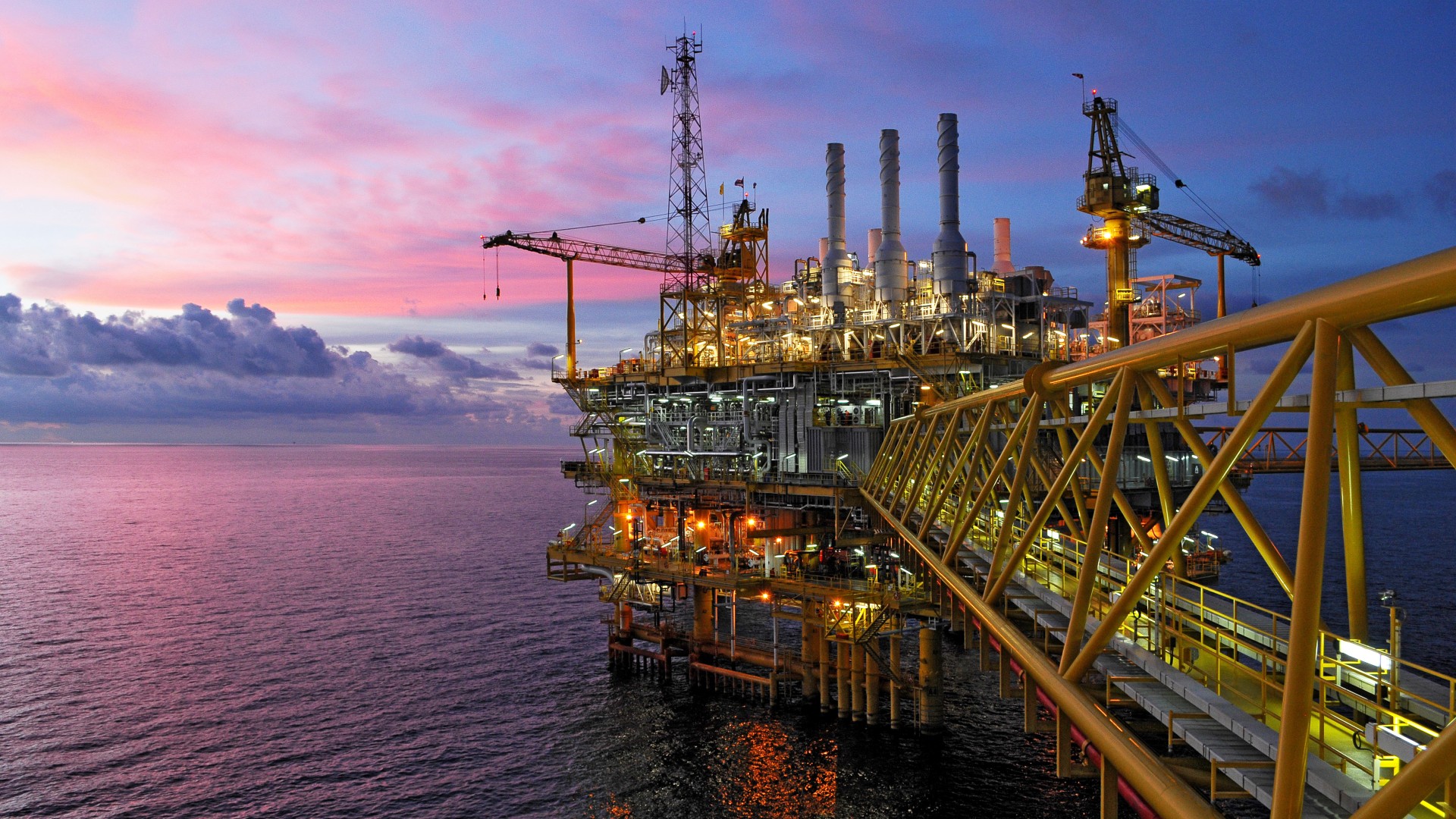
What is crude oil?
How is crude oil extracted and should we keep using it?

With the energy crisis roiling the world, sending fuel prices and other costs soaring, you may wonder where your energy comes from. Crude oil, in particular, is a pretty useful substance. Around the world, just over 95 million barrels of the stuff are used every single day, according to Statista, and by 2026, that figure could rise to 104 million barrels.
But what exactly is this "black gold"?
Crude oil is one of the three main fossil fuels, along with coal and natural gas, Ann Muggeridge, a professor in the Department of Earth Science and Engineering at Imperial College London, told Live Science in an email.
Related: How do we turn oil into plastic?
Fossil fuels are "the chemicals that are produced after the dead remains of plants and animals are compressed and heated under the Earth for a long period," said Paul Glover, a professor and chair of petrophysics at the University of Leeds in the U.K.
High temperatures and pressures, when applied to organic matter over an extended period of time, "induce chemical changes such as dehydrations, which result in the loss of almost all the oxygen originally present in the biomass," added Michael North, a professor of green organic chemistry at the University of York in the U.K.
The resulting material can be a solid (coal), liquid (crude oil) or gas (natural gas).
So, where can crude oil be found, and what can it be used for?
"Crude oil is more plentiful in the parts of the world that were oceans tens of millions of years ago and where ancient organic deposits were buried deeply enough that the material was 'cooked' to high enough temperatures to convert it into oil," Muggeridge told Live Science.
These areas would largely have been tropical, as such climates "facilitate plant growth," North said. However, as a result of continental drift, regions that had tropical climates tens of thousands of years ago "are not necessarily the ones that do now," North noted.
According to World Population Review, an organization that uses data and analytics to highlight global trends and statistics, the country with the most oil reserves is Venezuela, which has an estimated 300.9 billion barrels. Second on the list is Saudi Arabia, with approximately 266.5 billion barrels, and third place is occupied by Canada, with around 169.70 billion barrels. In this context, a 'barrel' is equal to 42 U.S. gallons, or around 159 liters, according to the University of Calgary. Each barrel, when full, weighs in the region of 300 pounds (136 kilograms).
But extracting crude oil is not a simple task, and it can be challenging to locate its various hiding spots deep underground.
"Before oil can be produced from a reservoir, we first have to find the reservoir," Muggeridge said. "This is not simple. Although most reservoirs are quite large — several kilometers across, and perhaps 50 meters [164 feet] thick — they are generally located between 1 km and 12 km [0.6 and 7.5 miles] underground."
Related: How do we tell the difference between geologic ages?
Geophysicists can only "see" these potential reserves by sending seismic waves through the Earth, Muggeridge said. As these waves reflect off the different layers of rock underground, they create a map of the underlying rock (or reservoir) composition. However, even when using very powerful computers, it is difficult to be "absolutely sure" there is oil underground until a well is drilled and experts can "identify oil in the drill cuttings," she added.
Drill cuttings are pieces of material removed from a hole that has been bored deep into the ground. By analyzing these shards, experts can note what is being drilled through — a process known as mud logging — and ultimately determine whether oil is present.
Drilling a well can take many months. In some cases, drilling projects can cost hundreds of millions of dollars, and, once an oil field has been discovered, it may then be "several more years" before it is fully productive, Muggeridge said.
In places like Saudi Arabia and Texas, much of the oil is found on land, not far beneath Earth's surface. "The closer to the surface the oil is, the easier it will be to drill down to it. Drilling on land is much less work than drilling through water," North said.
Crude oil is an incredibly valuable resource, both financially, and also in terms of its many uses. Once refined it can be separated into "usable petroleum products" such as gasoline, jet fuel, asphalt and diesel fuel, according to the U.S. Energy Information Administration.
While crude oil is immensely useful, its extraction is harming the planet. According to a study published in 2018 in the journal Science, "the extraction, transport and refining of crude oil" could account for as much as 40% of all greenhouse gas emissions that come from transport fuels, and 5% of total global emissions.
What's more, extracting crude oil often harms the local wildlife and environment.
Because most oil is less dense than water, spills often float on the surface, and so can negatively impact birds, fish and plants "through physical contact, ingestion, inhalation and absorption," according to the U.S. Fish and Wildlife Service.
However, products derived from crude oil, if developed for purposes other than fuel, could conceivably be used without being quite so devastating to the climate. "While hydrocarbons as a raw material does cause some environmental damage, it also provides most aspects of our modern convenient lives," Glover told Live Science.
For instance, crude oil is a core component in many everyday products, including perfumes, shoe polish, vitamin capsules and paint. These items aren’t burned as fuel. Put another way, once these products are made, they don’t produce carbon dioxide, meaning that they aren't contributing to climate change. However, North added, "these mostly do not biodegrade and so accumulate in the environment," which can cause various problems, such as build-ups of detrimental marine waste and microplastics.
According to research carried out by Kyushu University in Japan, there are at least 24 trillion pieces of microplastics in our oceans, though other sources suggest there could be as many as 51 trillion. These microplastics are so pervasive, they've even been found in human poop, Live Science previously reported.
Crude oil, along with other fossil fuels, "have allowed human civilization to develop from pre-industrial times to where we are today," North said. But he believes that change is needed. "We cannot continue exploiting [fossil fuels] the way we have for the last 100 years," North said. "They should be seen as a stepping stone from a non-industrialised society to one based on sustainable resources. The time has come to phase them out completely."
Originally published on Live Science.
Sign up for the Live Science daily newsletter now
Get the world’s most fascinating discoveries delivered straight to your inbox.

Joe Phelan is a journalist based in London. His work has appeared in VICE, National Geographic, World Soccer and The Blizzard, and has been a guest on Times Radio. He is drawn to the weird, wonderful and under examined, as well as anything related to life in the Arctic Circle. He holds a bachelor's degree in journalism from the University of Chester.
Wilkes Land crater: The giant hole in East Antarctica's gravitational field likely caused by a meteorite
Get a closer look at wildlife for less: This huge $60 saving on the Bushnell 10x42mm Trophy XLT binoculars — now down to their lowest-ever price at Adorama
Acer Aspire Vero 16 review: Admirably eco-conscious










